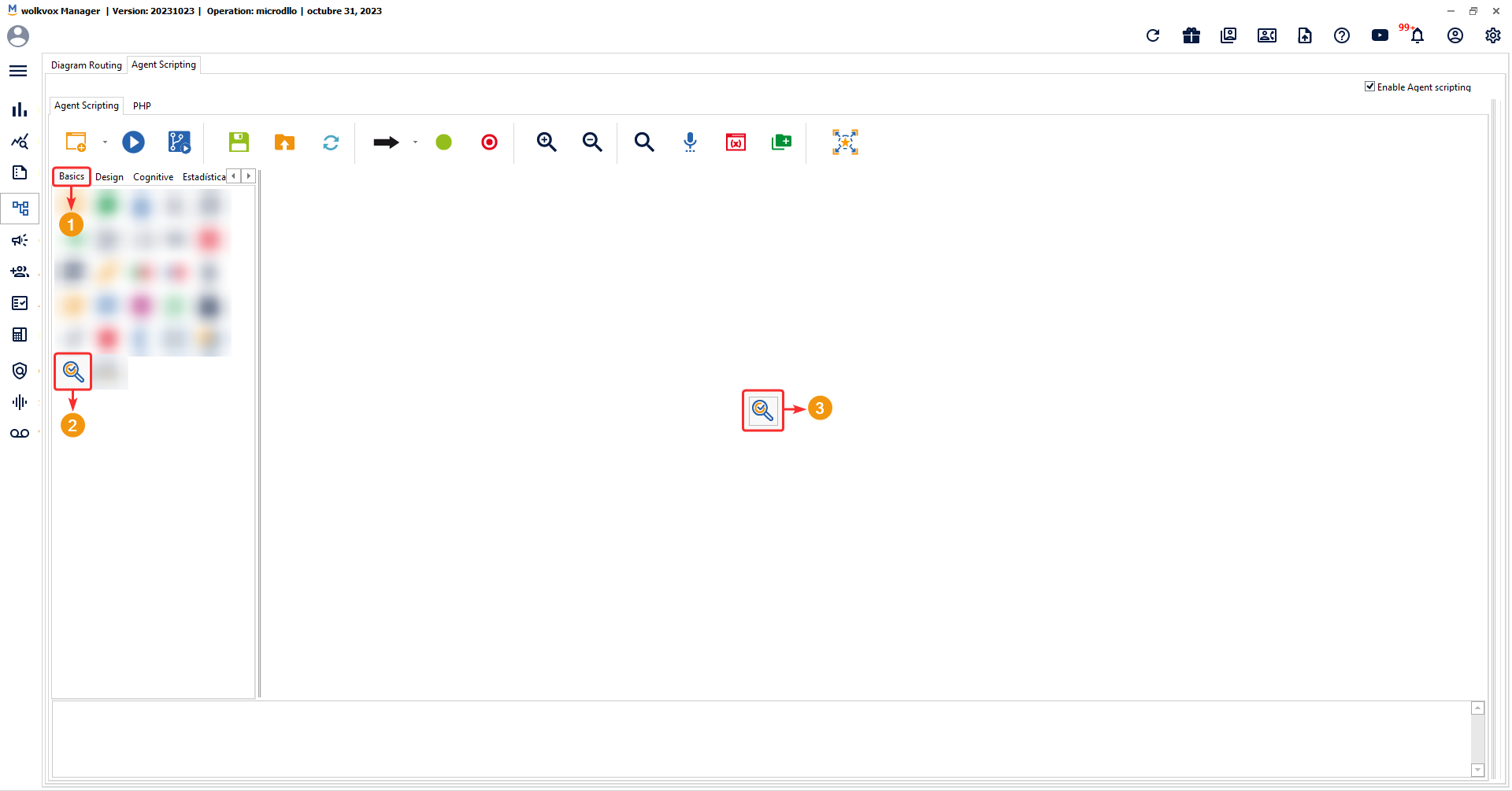 New component “Call Fusion” #
New component “Call Fusion” #

- This new component allows you to merge the recordings of different calls from a single interaction into a unified recording.
- The criteria for merging calls can be either calls associated with a phone number or with the customer’s identification number.
- The time frame for considering call merging is 24 hours, meaning only calls within the last 24 hours related to a customer’s phone number or identification number will be merged.
- The call recording will be stored in the “Data Monitor” section.
- The maximum number of transfers to merge call recordings is 15. If more than 15 call transfers are made, merging the recordings will not be possible.
- This component is only available in Agent Scripting.
- Note: It’s important to place the component after call encoding, when the call has already ended. For example, you can use it after the “Encode” component here in Agent Scripting.
- This enhancement provides a more comprehensive and cohesive view of customer interactions, optimizing recording management for a more efficient and detailed analysis.
 New component “QA Scripting” #
New component “QA Scripting” #

- This new component allows you to insert calls that pass through it into the Quality Analyzer section. Typically, calls sent to the quality analysis service are randomly selected. However, with this component, you can direct the calls passing through it to the quality analysis service.
- Note: This component is only available in “Agent Scripting” and does not have a configuration window. It is simply placed in the flow step where you want the call to be sent for quality analysis.
- This update provides greater control and ensures that specific interactions you want to evaluate are included in the quality analysis process. This component can be a valuable tool for enhancing and focusing the quality of service provided by agents.

 New feature in API “8. Delete one or several DNC” of wolkvox Configuration #
New feature in API “8. Delete one or several DNC” of wolkvox Configuration #
- Starting from this version, you can use {“telephones”: “all”, “type”: “inbound”} to delete only the phones from the “Do not call” list for inbound calls. Alternatively, you can use {“telephones”: “all”, “type”: “outbound”} to delete only the phones from the “Do not call” list for outbound calls.
- Previously, you could use {“telephones”: “all”, “type”: “”}, but this would delete all phones from both the “Do not call” inbound and outbound lists.
- This enhancement provides greater accuracy and control in managing the DNC list.
- For the official API documentation, click here.




